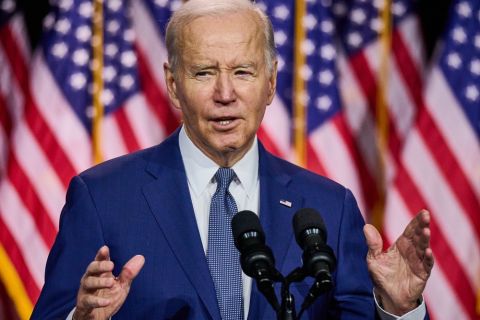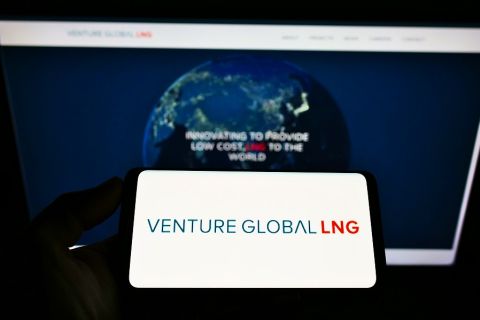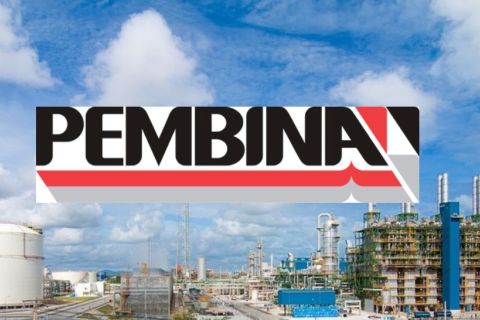Presented by:

Sometimes in life it’s the quieter, less obvious things that are actually more impactful. Toward the end of last year there was a lot of activity in Congress that was potentially impactful to the oil and gas industry. Much of the news focused on the big pieces of legislation moving through Congress, such as the Bipartisan Infrastructure Bill that President Biden signed into law and the budget reconciliation package known as Build Back Better (BBB) bill that stalled in the Senate after Sen. Joe Manchin (D-WV) said he could not support it.
The infrastructure bill directed a whole slew of government spending toward things such as the power grid, carbon capture and storage and electric vehicle recharging. BBB was originally going to remove several long-held tax deductions (percentage depletion allowance, deduction of geological and geophysical expenses, deduction of intangible drilling costs), but the version introduced in the House dropped those provisions. What it contained was a fee on methane emissions and an extension of the 45Q tax credit for carbon capture and storage.
So with these warnings averted, what are the biggest threats out of Washington? The three biggest factors negatively impacting the oil and gas industry today are regulatory uncertainty, investment capital uncertainty and inflationary uncertainty. Government policy is impacting all three.
With the legislative threats minimized, the regulatory threats and uncertainty come into view. The Biden administration has backed away from its early efforts to slow leasing on federal lands and waters and block new permitting for drilling. Other initiatives that would negatively impact oil and gas E&P are underway.
For example, the Interior Department is expected to raise royalty rates, further disincentivizing activities on federal lands. Additionally, while most larger producers already have efforts underway to detect and mitigate methane emissions, as they should, many smaller producers that haven’t will pay more to comply with the latest rendition of the methane rule. And, while the BBB and its accompanying methane fee have seemingly stalled, the government is expected to find ways to impose fees for methane emissions both onshore and offshore.
Watch Jack Belcher in the latest installment of Energy Policy Watch, a partnership between Hart Energy and Cornerstone.
Subscribe to receive notifications about new Energy Policy Watch episodes.
Over at the Federal Energy Regulatory Commission (FERC), the new makeup of the commission is not going to make permitting pipelines any easier, as the “public interest” standard is tested and perhaps revised to include a climate impact test. FERC permitting for LNG export facilities seems unthreatened for now but certainly less secure than under previous administrations.
These ongoing and anticipated regulatory efforts coupled with antidevelopment and often inconsistent rhetoric contributes to overall uncertainty, which plagues the industry overall. As a result, the energy industry is less apt to invest in new E&P, even when oil and gas prices are high.
Which brings us to the issue of investment capital uncertainty. We all know that prevailing attitudes by investment funds have helped drive capital away from fossil fuel development. In reality, more capital should be flowing to chase these critical commodities for which the world has not lost its need, as underscored by recent accusations by Congress and the administration that industry is purposefully holding back exploration as they plead with Saudi Arabia to bring more barrels to market. It is indeed an unusual dichotomy when investment dollars are slow to feed near certain returns.
While likely temporary, the current dynamics are not without consequences. Let’s remember that oil and gas discoveries in 2021 fell to their lowest level in 75 years but not because we are running out of hydrocarbons. We aren’t even close to that happening. Instead, discoveries plummeted because exploration budgets, cut during the pandemic, have failed to recover due in part to uncertainty over access to investment capital.
The final critical factor is high inflation or inflationary uncertainty. High energy prices are one of the factors feeding inflation, and inflation is also making oil and gas more expensive to produce. It’s a vicious cycle that must ultimately be addressed through monetary policy in the form of higher interest rates, the removal of excess dollars out of the economy and significantly sound energy policy that gets the U.S. producing more of its own energy.
So it’s pretty clear that we have three uncertainties—regulatory uncertainty, investment capital uncertainty and inflationary uncertainty—that are hurting our domestic energy industry and hurting the U.S. economy. Current government policies are moving us in the wrong direction. We need to sound the alarm and make our leaders aware that with the right government policies, all three areas of uncertainty can be fixed.
Recommended Reading
EQT CEO: Biden's LNG Pause Mirrors Midstream ‘Playbook’ of Delay, Doubt
2024-02-06 - At a Congressional hearing, EQT CEO Toby Rice blasted the Biden administration and said the same tactics used to stifle pipeline construction—by introducing delays and uncertainty—appear to be behind President Joe Biden’s pause on LNG terminal permitting.
Venture Global Acquires Nine LNG-powered Vessels
2024-03-18 - Venture Global plans to deliver the vessels, which are currently under construction in South Korea, starting later this year.
Imperial Oil Shuts Down Fuel Pipeline in Central Canada
2024-03-18 - Supplies on the Winnipeg regional line will be rerouted for three months.
Pembina Pipeline Enters Ethane-Supply Agreement, Slow Walks LNG Project
2024-02-26 - Canadian midstream company Pembina Pipeline also said it would hold off on new LNG terminal decision in a fourth quarter earnings call.
TC Energy's Keystone Oil Pipeline Offline Due to Operational Issues, Sources Say
2024-03-07 - TC Energy's Keystone oil pipeline is offline due to operational issues, cutting off a major conduit of Canadian oil to the U.S.





